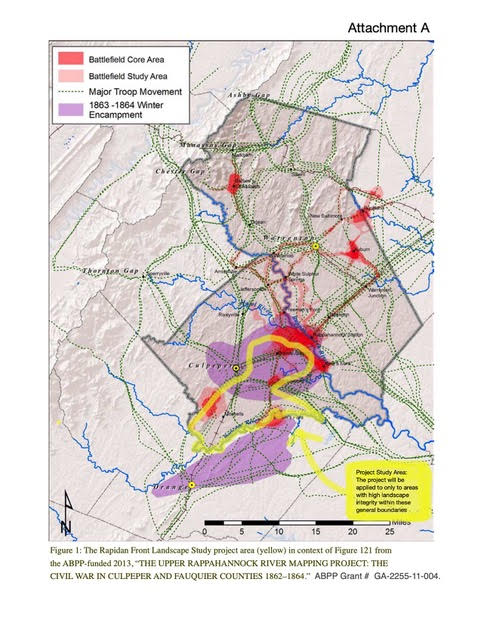In January 2017, Donnie Johnston, a writer for the Fredericksburg Free Lance-Star, wrote a summary history of the Raccoon Ford area. I think the heyday was defined as prior to Hurricane Agnes flood of June 1972. In some respects that may be true, but for those of us who live along this section of the Rapidan River, the Raccoon Ford area is alive and well – and still brimming with the history of Culpeper and Orange counties and with the history of our country.
While many current residents of Culpeper and Oranges counties might not be familiar with the name or its location, Raccoon Ford has been at the crossroads of our country’s history.
As Donnie Johnston wrote, during the last 150 years, “the Rapidan, which flows into the Rappahannock River about 15 miles downstream, was both Raccoon Ford’s best friend and worst enemy. The river afforded power for a large carding and gristmill that sat on the Orange County side and a sawmill that prospered on the Culpeper bank. But the Rapidan, whose headwaters are in the mountains of Madison County, has always been prone to flooding and several mills have been washed away, the last one in 1937.”
Whether apocryphal or not, tradition has it that Raccoon Ford got its name in 1781 when the Marquis de (General) Lafayette, while waiting to combine his forces with Col. Anthony Wayne’s command from Pennsylvania to launch an assault on Yorktown in the American Revolutionary War, sought to construct a crossing on the Rapidan River.
While felling trees for the crossing, his troops cut one that housed family of raccoons … hence, the ford, used long before settlers arrived by Native Americans, became known as Raccoon Ford.
Tradition also has it that Royal Governor Alexander Spotswood crossed Raccoon Ford (yet not officially named) in 1716 during his Knights of the Golden Horseshoe expedition. Whether or not he crossed at Raccoon Ford, he and his Knights certainly passed by the ford and through the Rapidan River valley.
Donnie Johnston records some of Raccoon Ford highlights in his 2017 article. He states that “[t]he first known mill was built at Raccoon Ford in 1780 and history records that both the carding mill and sawmill were in operation in 1816. The U.S. government established a post office at Raccoon Ford in March of 1825 and by 1834 the community had eight homes, a shoe and boot factory, a tailor’s shop (where the carded wool was made into clothing), a small saloon, a blacksmith shop and a carriage maker’s shop. The total population was about 80.”
Union and Confederate troops camped on both sides of the river at Raccoon Ford. This can be seen in the several maps posted on this website. Johnston writes that “In 1863 about 10 skirmishes were fought in and around the [Raccoon Ford] village. Upon leaving, the Yankees burned the town, with the exception of the mill and a brick plantation kitchen, which still stands today.”
Johnston writes that after the new bridge along Route 522 was built, the bridge at Raccoon Ford was not rebuilt. Instead, Virginia constructed a footbridge over the Rapidan River using the old bridge abutments. This served as a visitor attraction until the footbridge was destroyed by the Hurricane Agnes flood of June 1972.
While no longer a commercial center or major thoroughfare, Raccoon Ford and the surrounding area is still steeped in history and is a place many of us call home. And each time the Rapidan floods, we feel a certain kinship with those who were here before. If you’d like to read Donnie Johnson’s full article, you will find it on fredericksburg.com

